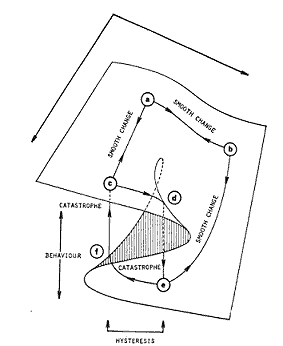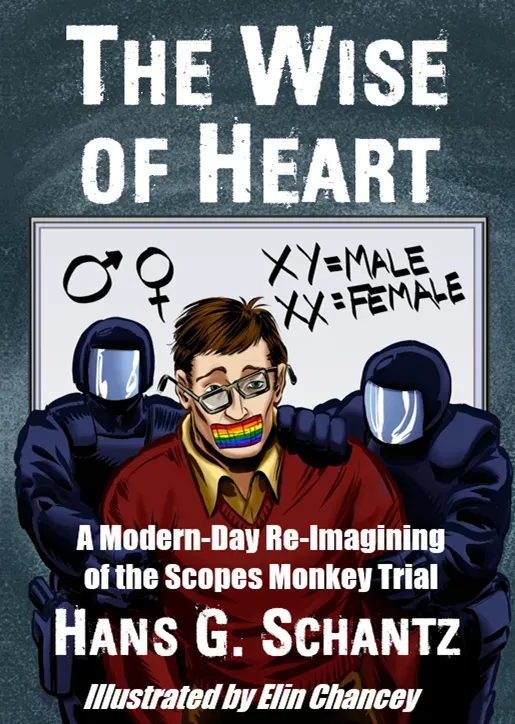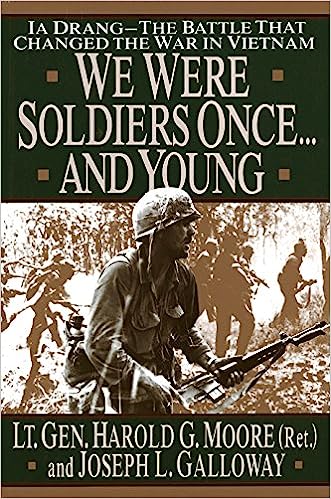The Long View: Strange Angel: The Otherworldly Life of Rocket Scientist John Whiteside Parsons

I think Tim Powers should write a book about Parsons. A native Angelino, with ties to both rocketry and the occult, who died young under mysterious circumstances. This would probably write itself.
Strange Angel:
The Otherworldly Life of Rocket Scientist John Whiteside Parsons
By George Pendle
Harcourt, 2005
US$25.00, 350 Pages
ISBN 0-15-100997-X
The death of John Whiteside Parsons (1914-1952) sketched the major themes of his life with tabloid strokes. Within a few days of the fatal explosion in his laboratory in Pasadena, California, the public was reminded of his history as a founder of the science of rocketry and as a forensic explosives expert, while being introduced to his parallel career as a black magician and former head of the Agapé Lodge of the Ordo Templi Orientis (OTO), the local outpost of Aleister Crowley's Thelemite religion. The rumors that the explosion was really a spectacular suicide were probably false; his elderly mother did kill herself within a few hours of learning of the accident, however.
And that was only the half of it. Jack Parsons seems to have known, and sometimes rented rooms to, most of the great names of the Golden Age of science fiction. His circle included Ray Bradbury, Robert Heinlein, L. Sprague de Camp, and many others. L. Ron Hubbard was of their number: Parsons not only performed apocalyptic ritual magic with him, but was fleeced out of more than $20,000 by him. Moreover, Parsons moved at the fringes of the Communist underground of scientists and technicians; he attended Leftist salons with Robert Oppenheimer's brother, a known Party member, which was among the reasons for Parsons' many awkward interviews with the FBI in later years. In retrospect, however, we see that politics was the least of his subversions; he was actually trying to inaugurate a new age through magic. Most dreadful of all, there was this: Jack Parsons wrote macabre poetry that makes Lovecraft's look good.
George Pendle is chiefly a science writer. He focuses on Parsons' work on rocket fuels, which is as it should be. However, by no means does he neglect Parson's Californian milieu of science, magic, and popular literature, or the question of how Parsons' occult interests meshed with his scientific ones. Parsons was the black sheep of the story of rocketry, scarcely mentioned for many years by the newly respectable rocket division at Caltech, or by the Aerojet Corporation, or at the Jet Propulsion Laboratory, all of which he helped found. This sober biography helps to correct the record. Parsons also has an apparently growing influence on popular culture, for which this book provides essential background.
Parsons was born in Los Angeles, to a wealthy but broken family; his philandering father was forced to return to his native New England. (Father and son were both named “Marvel” at birth, by the way, a technicality that both forgot as quickly as possible.) He was raised by his mother and maternal grandparents in Pasadena, where Parsons would spend the most important periods of his life. The Great Depression hit his family hard. He did finish high school, but he would never hold a higher degree. He built his long-standing interest in explosives and fireworks into a career in explosives manufacturing, an industry where he always seemed able to find work when other opportunities were scarce.
Parsons and his friend, Edward Forman, had experimented with rockets since childhood. They did not simply like fireworks; they dreamed of manned space flight, a concept made real to them by the budding genre of science fiction. This notion then found little favor in the academic establishment. Robert Goddard, the inventor of the liquid fuel rocket, found that out the hard way in 1919, when he was humiliated by the press after he alluded to the possibility of sending a rocket to the moon.
(Goddard plays oddly little part in this story, however. After his public disgrace, he retreated like the mad scientist of science fiction to the desert, to pursue his cautious and secretive researches on a foundation grant. The desert he retreated to was Roswell, New Mexico. You can't make this stuff up.)
Undaunted by respectability, Forman and Parsons visited the California Institute of Technology (Caltech), conveniently located in Pasadena, with a proposal for a program of modest but systematic rocket research. They did find a graduate student, Frank Malina, who was able and willing to provide the mathematical treatment their empirical research lacked. They also found a senior faculty patron in Theodore Kármán, who allowed them the off-hours use of the laboratories and other facilities, but no funding. This was the beginning of the Suicide Squad, a growing group of rocket enthusiasts whose numerous explosions, planned and otherwise, irked the university hierarchy but delighted the students and local press. Before long, they took the more pyrotechnic aspect of their work to the desert, where it became the basis of the American aerospace industry.
One of the merits of Strange Angel is that it illustrates how an international network of nerds was quite capable of instigating a technological revolution long before the invention of the Internet. The world's chief rocket societies were located in Britain, Germany, and the United States. They were part of a network that included the new subculture of science fiction, which communicated through the old pulp magazines. The most technically precocious domain of this network was in Germany. The Germans had to drop out of the network quite early in the 1930s, when the military became serious about funding their research. Nonetheless, Wernher von Braun kept up his subscription with Astounding Science Fiction even during the war years, through a maildrop in neutral Sweden.
The role of military subsidy in the development of rocket research in the United States was not so different, except that the Suicide Squad and their supporters could not attract the military's attention until the eve of World War II, and even then they had to employ euphemisms in their proposals: the Jet Propulsion Laboratory in Pasadena has that name because the term “jet” evoked less official distain than “rocket.”
Parsons ensured the success of the project that made the military take rockets seriously. What they wanted was a way to assist the takeoff of heavily laden aircraft from confined spaces, such as bombers taking off from aircraft carriers. The obvious answer was some sort of auxiliary rocket, but there were problems. Liquid-fuel rockets were too complicated and required hard-to-store fuels. Solid-fuel rockets gave a thrust that was of short duration, and also notoriously uneven. Parsons solved the problem by making the biggest innovation since solid-fuel rockets were invented: he replaced black powder with a homogenous solid fuel that consisted, in essence, of asphalt plus an oxidizer. In later years, the biggest boosters would use liquid fuel, but Parsons' solid-fuel invention remains the basis of most practical applications of rocketry.
Parsons himself was a handsome and even fashionable young man with wide cultural interests. In the mid-1930s, when he was just an explosives engineer with an odd hobby at Caltech, he acquired an even odder hobby when he began to attend celebrations of the Gnostic Mass at the Agapé Lodge of the OTO. His attendance was not in itself all that remarkable. Academics, members of the film industry, and bohemians of various sorts visited the Lodge. The meetings, as one member later recalled, were “like a Fellini movie.” Parsons, however, progressed from an appreciation of the meetings as occasions for fancy dress to a systematic interest in the works of Aleister Crowley and the Church of Thelema. He and Helen, his first wife, joined the Lodge.
Parson became the apple of Aleister Crowley's eye, not least because Parsons was doing well financially with his war work; while Crowley, living in England with his personal demons and an expensive heroin habit, desperately needed the money. And in fact Parsons was good to the Lodge, if not necessarily good for it. He transferred its headquarters to the mansion in Pasadena that have been built by Arthur Flemming, the lumber magnate who had, not altogether coincidentally, provided the funding to establish Caltech. In addition to providing a venue for the performance of ritual magic, the mansion became a boarding house for artists and writers. The life of the house anticipated the communes of the 1960s and '70s, except that it included a full range of generations, from children to the elderly. We see it reflected, perhaps, in the plural families described in the novels of Robert Heinlein, such as The Moon is a Harsh Mistress and Stranger in a Strange Land.
Parsons own marriage disintegrated in the warm bath of sexual openness. The Lodge leader, Wilfred Smith, left with Parsons' wife when he finally accepted Crowley's decision that Parsons should replace him as head of the Lodge. (Frustrated by Smith's reluctance to leave, Crowley wrote a scripture that revealed Smith was actually a god, and needed to go on a spiritual retreat to discover which god he was; human resource managers should take note of this procedure when they need to terminate a senior executive.) Parsons himself had taken up with his wife's indictably younger half-sister, who would eventually run off with L. Ron Hubbard, along with most of Parsons' money.
The Church of Scientology acknowledges the presence of Hubbard at the Lodge. They say that he was assigned by naval intelligence to investigate a black-magic cult, which he dispersed, rescuing a girl in the process. Certainly Hubbard was not merely a passive assistant in the operation that Parsons conducted in 1946, which he believed to be of world-historical significance. Pendle describes it thus:
Babylon
Bolitho was the author of Twelve against the Gods, a book about heroes who changed the world. The most immediate influence for Parsons' concept of the Working, however, seems to have been a story by one of his science-fiction-writer friends, Jack Williamson, entitled Darker Than You Think. This short story, later expanded to a novel, is actually about werewolves, and their campaign to reassert the dominance over mankind that they had enjoyed in prehistoric times.
This conjunction of ideas explains a few odd corners of popular culture. Female messiahs and Antichrist-like women have been appearing in print and on television for some years now: one thinks particularly of the Buffy series and its spinoffs. Since the Babalon Working is apparently not particularly obscure, it could be the origin of the notion. Note also that Williamson may have conceived the motif of lycanthropy as a genetic condition, not a spiritual one.
In any case, the Agapé Lodge did indeed break up not long after the Babalon Working, though perhaps less because of anything Hubbard did than because Parsons was starting to break up, too. There has never been a lack of scientists and engineers with a mystical streak; most histories of the invention of the atomic bomb note Robert Oppenheimer's claim that he recited a verse from the Bhagavad-Gita to himself at the first bomb test: “I am become death, the destroyer of worlds.” Parsons was less pretentious, but more alarming: during static tests of rocket engines, he would stamp his feet in the test pits as he recited Crowley's “Hymn to Pan.” He was no longer surrounded by his Animal House friends from the Suicide Squad, but by a new cadre of humorless engineers and industrial bureaucrats, who noted that this dangerous lunatic had also stopped taking baths and was obviously using amphetamines.
He first lost his security clearance because of his earlier political contacts. He got it back temporarily, but his later personal behavior (including negotiations to move to Israel that involved transferring information from his current employer, Hughes Aircraft), assured that he would never have anything to do with government-funded research again. He resigned from Agapé and sold the building to developers, who demolished it. He did retain a second wife, nicknamed “Candy,” whom he believed he had summoned through magic. In his final years, he took some steps toward founding his own religion, which he called “Witchcraft,” but it did not come to much. Pendle notes that, despite Crowley's efforts to build a spiritual empire, the only one in this story to launch a spiritual enterprise with popular appeal was L. Ron Hubbard.
Parsons continued to work as an explosives expert. His last job was as a special-effects man in the film industry. He probably killed himself accidentally while working on a rush order just before he planned to leave with his wife for a long stay in Mexico.
Parsons' life can be explained in part through the working of “stigmatized knowledge,” which Michael Barkun describes in A Culture of Conspiracy. Knowledge, and apparently also the desire for knowledge, that has been dismissed by society as a whole may yet survive in little subcultures. These intermingle, so that rejected ideas of all sorts come to seem more plausible just because they have been rejected.
Pendle tells us again and again that, until the fourth decade of the 20th century, rocketry was an underground enthusiasm, particularly as it applied to space flight. Those we now see as the fathers of the theory of space flight, Konstantin Tsiolkovsky and Hermann Oberth, attracted no academic interest. Robert Goddard and the Suicide Squad at Caltech continuously met with the confused idea, even among physicists, that rockets would not work in a vacuum.
Parsons and friends were not quite in the position of someone who believes that all civilization comes from Atlantis: the Suicide Squad could produce evidence, given enough work and detonations. Still, they could only conjecture that their grander objectives were possible, and there was no way at all to verify the desire for space flight. In the world where Parsons lived, his project was no more or less plausible than the Stalinism and Theosophy with which it coexisted. These ideas were of uneven quality, to say the least, but it is not at all surprising that they incubated in the same milieu, and even in the same minds.
Parsons ensured that space flight would shuffle toward Pasadena to be born, and that still seems the most likely of his enthusiasms to prosper in the long run. Still, as this is written in 2005, that assessment is a matter of faith: NASA seems to be doing for manned space flight what the Soviet Union did for socialism. In contrast, “Babalon” for many people is not just a misspelling anymore. Parsons was wise to cultivate science-fiction writers: the future really is full of surprises.
Copyright © 2005 by John J. Reilly

Strange Angel: The Otherworldly Life of Rocket Scientist John Whiteside Parsons By George Pendle



Comments ()